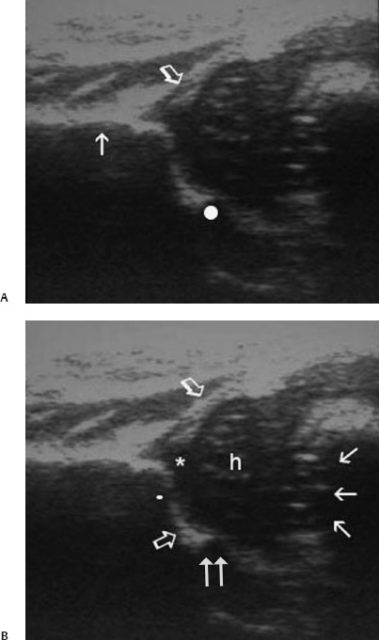Surgical treatment involving resection of metastatic lesions and joint reconstruction using bone grafts is burdened with a high rate of complications.
Left acetabular roof mri.
Protrusio acetabuli and acetabular retroversion a posteriorly oriented acetabulum can be seen on oblique axial mri of the hip.
Saf was classified into two types.
Three dimensional surface rendered ct image of the right acetabulum obtained in anatomic position with digital transection in the coronal plane shows a 45 roof arc angle and a 10 mm subchondral arc purple area the superiormost 10 mm of the acetabulum and the arc subtended by the 45 roof arc angle.
Mri can be performed rapidly is cost effective and is sensitive and specific for the diagnosis of occult fracture.
Subsequent mri was performed and demonstrated bone marrow oedema bmo in the acetabulum and the femoral head and neck figure 2.
The reported incidence is approximately 3 per 100 0.
In the athlete with a suspected stress fracture it is best to choose mri as the first advanced imaging test.
Radiotherapy effectively decreases pain yet it does not restore the ability to load the joint.
22 acetabular depth can be quantified on the same oblique axial images that are used to calculate the alpha angle.
It is seen in as many as 10 of hips and is typically located at the 12 o clock position both in the coronal and sagittal planes.
Epidemiology acetabular fractures are uncommon.
Type 1 which was filled with contrast material on mr arthrograms and type 2 which was filled with cartilage.
A coronal fat saturated t2 weighted mr image of pelvis shows deficient acetabular roof in left hip center edge angle 20 consistent with hip dysplasia.
The new high field strength magnets operating at 1 5 tesla are more comfortable for the patient.
It is a thin star shaped focal bare area devoid of articular cartilage and can be mistaken for a pathologic defect at mri and arthroscopy.
The acetabular retroversion will result in an increase in coverage of the anterior aspect of the femoral head.
It is located more medially within the acetabular roof than the saf immediately adjacent to the acetabular notch figure 5.
Figure 1 bone scintigraphy anterior view showed intense uptake in the left acetabular region and less avid uptake in the femoral head and neck compared with the right side.
A medical student a radiology fellow and two senior radiologists reviewed 1002 consecutive mr arthrograms for the presence of an accessory bony fossa in the roof of the acetabulum or saf.
A supra acetabular fossa also known as pseudodefect of acetabular cartilage is an anatomic variant whereby a focal defect is evident within the subchondral bone of the acetabular roof.

